World Bee Day: Celebrate Bees, Protect Our Nature
Updated: 21 Dec 2024
95
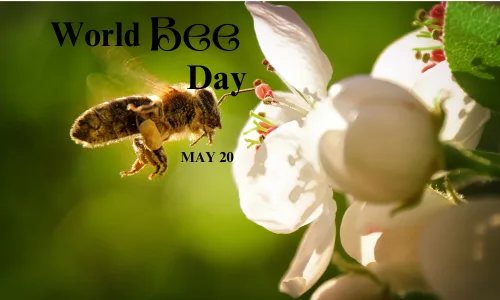
Introduction
Discover the significance of World Honey bee Day, the fundamental job of honey bees in fertilization, the dangers they face, and moves we can make to safeguard these fundamental pollinators
Consistently on May (20) twentieth, we observe World Honey bee Day. This day brings issues to light about honey bees’ crucial jobs in environments and food security. However little and frequently disregarded, honey bees are vital. Without them, life would deal with difficult issues.
The Unified Countries laid out World Honey bee Day in 2017, following Slovenia’s proposition. Slovenia has a rich beekeeping history. The date was decided to respect Anton Jansa, a cutting edge beekeeping pioneer. This day means to safeguard honey bees and different pollinators, feature the dangers they face, and elevate feasible practices to guarantee their endurance.
World Bee Day: Celebrating Nature’s Essential Pollinators
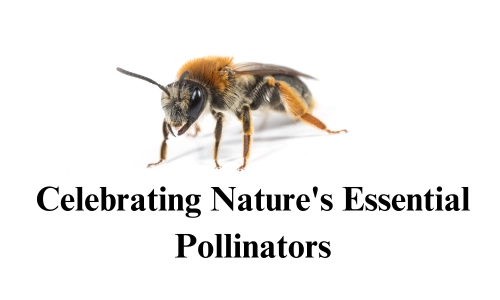
Honey bees accomplish more than make honey; they’re key pollinators for plants and yields. They assist with developing natural products, vegetables, nuts, and seeds by moving dust between blossoms. Around 75% of the world’s top food crops, similar to almonds, apples, espresso, and strawberries, depend on honey bees for fertilization.
Honey bees likewise support biodiversity and solid environments. Over 80% of blooming plants need pollinators like honey bees to flourish. This, thus, upholds numerous living beings in the pecking order. Without honey bees, environments would waver, prompting less plants and hurting the creatures and people that depend on them.
Dangers to Honeybee Populations
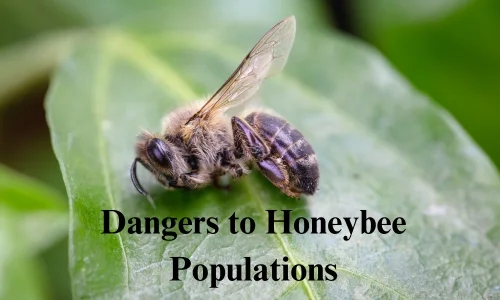
Honey bees are urgent however face numerous dangers, making their numbers drop around the world. Understanding these dangers is critical to tracking down arrangements.
Living space Misfortune and Urbanization Metropolitan development and agribusiness are obliterating honey bees’ regular homes. Deforestation and the deficiency of wildflower glades make it difficult for honey bees to track down food and safe house.
Pesticides and Unsafe Horticultural Practices Modern cultivating’s utilization of hurtful synthetic substances, as neonicotinoids, is destructive for honey bees. These synthetics upset honey bees’ capacity to explore and track down food.
Environmental Change Environmental change makes large issues for honey bees. It causes increasing temperatures and flighty climate, disturbing the timing among honey bees and the plants they need.
Sicknesses and Intrusive Species Parasites and illnesses debilitate honey bee settlements. Intrusive species, similar to the Asian hornet, go after honey bees, aggravating the issue.
Worldwide Recognition of World Bee Day
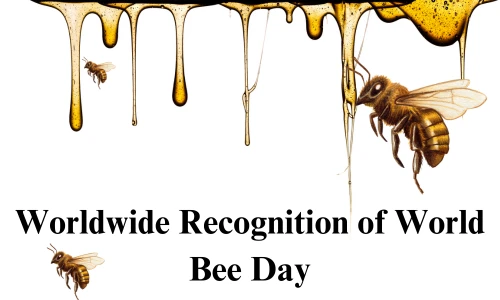
World Bee Day was laid out by the Unified Countries General Gathering in 2017, on account of Slovenia’s endeavors. Slovenia, a top beekeeping country, featured the requirement for worldwide activity to safeguard honey bees and their natural surroundings.
On this day, individuals all over the planet take part in exercises, for example,
Instructive Missions: Schools, natural gatherings, and beekeeping affiliations run studios to feature honey bees’ significance.
Local area Occasions: Exercises like tree planting, beekeeping demos, and honey tasting support neighborhood inclusion.
Strategy Backing: Legislatures reaffirm their help for maintainable cultivating and pollinator assurance.
World bee Day helps us to remember the earnest requirement for aggregate activity to save honey bees and, likewise, our planet’s wellbeing.
Moves toward Safeguard Honey bees
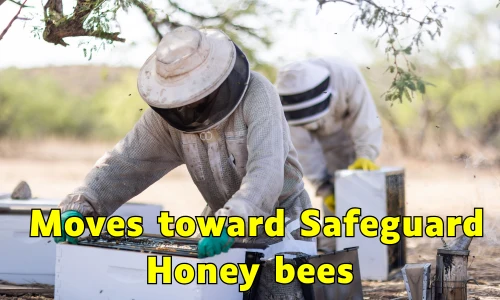
Safeguarding honey bees requires a multi-pronged methodology that includes states, associations, and people. Here are a few compelling procedures:
Maintainable Cultivating Ranchers can utilize crop pivot, agroforestry, and natural techniques to safeguard honey bees. Adding wildflower cradles around ranches likewise makes a difference.
Cutting Pesticides Legislatures and ranchers ought to progressively eliminate destructive pesticides. They can utilize eco-accommodating other options and coordinated bother the board to safeguard pollinators.
Honey bee Cordial Nurseries Everybody can help by establishing local blossoms, bushes, and trees. Keeping away from synthetic substances in gardens is additionally key.
Supporting Beekeepers Purchasing neighborhood honey and honey bee items upholds beekeepers and solid honey bee populaces.Worldwide Activity Nations should cooperate to handle worldwide honey bee challenges. They ought to focus on biodiversity and battle environmental change.
Conclusion: A Call to Action
World Honey bee Day fills in as a strong sign of the essential job honey bees play in our reality. The decay of honey bee populaces represents a huge danger to our biological systems, food security, and generally prosperity. By understanding the difficulties confronting honey bees and making an aggregate move, we can pursue a future where these fundamental pollinators flourish, guaranteeing a solid planet for a long time into the future. The activities we take today will decide the destiny of honey bees and, eventually, the fate of our planet. Allow every one of us to vow to help honey bee protection endeavors and add to an existence where honey bees can proceed to buzz and fertilize our reality.
FAQs
What’s World Bee Day?
World Bee Day is celebrated every May 20th. The day highlights the significance of pollinators and bees in our food chain and ecosystem. This day is also a call for protecting these animals and the habitats they inhabit
Why May 20th?
The reason is that the date honors Anton Jansa, an 18th-century beekeeping pioneer. His work was essential to modern beekeeping and demonstrates how important bees are to agriculture and the environment.
Who can get involved?
You can be involved through:
- Help children and their friends learn about the importance of bees.
- Join our community by purchasing honey and beeswax products.
- Make a garden with blooms and other plants which attract honeybees.
- Take part in local events, or join online campaigns to help save honeybees.
What are the primary Bee populations at risk?
The bee population are threatened by a myriad of things which include:
- Pesticides that have an impact on their wellbeing.
- The decline in habitat is a result of urbanization and the growth of agriculture.
- The changes in climate alter the pattern of their hunting as well as their habitat.
- Infections and parasites such as Varroa Mites.
Please Write Your Comments